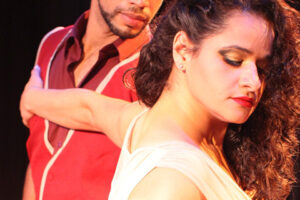Traditional Brazilian Dance and Music: The Fascinating History of Forró
Introduction
Brazil is a country rich in culture and diversity, and music and dance play a fundamental role in expressing this richness. Among the various Brazilian music genres, forró stands out as one of the most emblematic, deeply rooted in the northeastern culture and with a fascinating history that deserves to be told in detail. In this blog, we will explore the rich and fascinating history of Forró, both as a music genre and as a traditional Brazilian dance that enchants thousands of people in Brazil and also abroad. Forró, known for its animation and contagious rhythm, has deep roots in the northeastern culture of Brazil. Our journey will take us through its origins, regional styles, distinctive characteristics, and its influence on Brazilian society.
Origins of Forró
The term “forró” was first registered in 1937, in the song “Forró na Roça,” composed by Manuel Queirós and Xerém. However, the origin of the musical genre predates this date.
According to the folklorist Câmara Cascudo, forró emerged in the 19th century in Northeast Brazil, as a fusion of African, indigenous, and European musical influences.
The rhythms that compose forró are traditionally marked by the zabumba, a large drum responsible for the bass, the triangle, responsible for the high-pitched sounds, and the sanfona, an accordion that can have buttons or keys and 8 to 120 basses, but unlike what one may believe, forró was originally played with the rabeca, a type of violin with a more rustic sound.
Also, contrary to popular belief, forró was initially played by bands, and this formation with trios was an economic adaptation by Luiz Gonzaga to have more mobility and financial viability.
The lyrics of forró songs are generally about love, work, parties, rural everyday life, sorrows, and joys.
The Expansion of Forró across Brazil:
From the 1940s onwards, forró began to gain space in major Brazilian cities such as Rio de Janeiro and São Paulo. This movement was driven by the migration of northeasterners in search of better living conditions, bringing not only the rhythm but also the typical northeastern parties and cultural traditions.
with the rise of artists like Luiz Gonzaga and Jackson do Pandeiro.
During this period, forró was in its formative and consolidation phase as an authentic and popular musical genre in Northeast Brazil. At that time, several songs and artists such as Luiz Gonzaga and Jackson do Pandeiro emerged, becoming classics that continue to be appreciated to this day. Below are some of the main songs from the 1940s and 1950s:
Asa Branca – Luiz Gonzaga: Released in 1947, this song is considered a forró anthem and became one of the greatest successes of the King of Baião, Luiz Gonzaga. Composed in partnership with Humberto Teixeira, “Asa Branca” speaks about drought and hope for rain in the Northeastern backlands.
Baião – Luiz Gonzaga: Another classic by Luiz Gonzaga, released in 1946. This song was one of the first to popularize baião, one of the foundational rhythms of forró, throughout the country.
Juazeiro – Luiz Gonzaga: Released in 1954, this song portrays the city of Juazeiro do Norte, in Ceará, an important religious and cultural center in the Northeast.
Paraíba – Luiz Gonzaga: Also from 1954, this song exalts the beauty and culture of Paraíba, a northeastern state with a strong forró tradition.
Respeita Januário – Luiz Gonzaga: Released in 1950, this song is a tribute to Luiz Gonzaga’s father, Januário, who was also an accordionist.
Qui Nem Jiló – Luiz Gonzaga: Released in 1950, this song is one of Luiz Gonzaga’s most famous and deals with love and longing in the backlands.
Feira de Mangaio – Sivuca and Glorinha Gadelha: Released in 1950, this song is one of the most iconic in forró, with its captivating melody and lyrics that portray life in the Mangaio market.
Vem Morena – Jackson do Pandeiro: Released in 1953, this song is one of the most famous by the singer and songwriter from Paraíba, Jackson do Pandeiro, who was also an important figure in popularizing forró.
Paraíba Masculina – Marinês: Released in 1955, this song, performed by “Queen of Xaxado” Marinês, celebrates the strength and beauty of the women from Paraíba.
Adeus Maria Fulô – Sivuca: Released in 1952, this song is an adaptation of a folk song and became a classic of instrumental forró, with Sivuca’s unique talent on the accordion.
These are just a few of the main forró songs from the 1940s and 1950s that marked the time and contributed to consolidating forró as one of the most important cultural expressions in Brazil.
The Meaning of the Name “Forró”
The origin of the name “Forró” itself is a subject of debate among researchers. One of the most accepted theories, as mentioned earlier, and defended by Câmara Cascudo, is that the word “Forró” derives from the expression “forrobodó,” a word of African origin, which means “party,” “uproar,” “confusion,” or “mess.”
Another possible explanation is that the word originated from the term “forrobodó,” used by the English to describe popular parties. According to this theory, British engineers who settled in the region of Pernambuco during the installation of the Great Western railway used to promote parties to integrate more with the community. Such events were open to the public and had the phrase “for all” on their invitations, meaning “for everyone” in Portuguese. The local people began to pronounce it as “forró.”
This version became very famous because Luiz Gonzaga used to promote it, but he was a great storyteller, so which version do you prefer?
Styles:
Forró is a vast culture that presents a diversity of styles, genres (rhythms), and dances, varying according to different regions. But here I will divide Forró into 2 major groups:
- Forró Pé de Serra
Forró Pé de Serra is considered the most traditional and authentic style. Characterized by the use of instruments such as the sanfona, the triangle, and the zabumba, this style provides a lively and contagious atmosphere that attracts dancers of all ages.
- Forró Eletrônico
Forró Eletrônico, as the name suggests, brings a modern approach to the genre, incorporating electronic elements into traditional music with a great influence of guitarrada, and featuring instruments like drums, bass, and guitar.
The Role of Forró in Brazilian Society
Forró goes beyond a simple dance and music; it plays a crucial role in Brazilian society, especially in the Northeast of the country. It promotes unity among people, strengthens cultural ties, and preserves tradition from generation to generation, impacting the economy and influencing other arts such as plastic arts, audiovisual, crafts, and others. Forró is a form of artistic expression that conveys the history of the northeastern people and their experiences.
The Expansion of Forró across Brazil and the World
Over the years, Forró has transcended the borders of the Northeast and conquered all of Brazil. This contagious rhythm has found its place in music festivals and cultural events in various regions of the country. Now, Forró belongs to the world, with international fans and dancers spread across the globe, and incredible festivals from Japan to the United States, from Russia to Chile. But that is a chapter to be developed in another blog.
Conclusion
Forró is a traditional Brazilian dance with a rich and fascinating history. Its deep roots in Northeast Brazil and its diversity of styles make this form of expression unique and engaging. The role of Forró in Brazilian society is crucial for preserving culture and strengthening bonds among people. Its expansion throughout Brazil and the world proves that this contagious dance has won hearts beyond the borders of the Northeast. May Forró continue to enchant future generations and convey the joy and energy of the Brazilian people!
By Miguel Gomes

